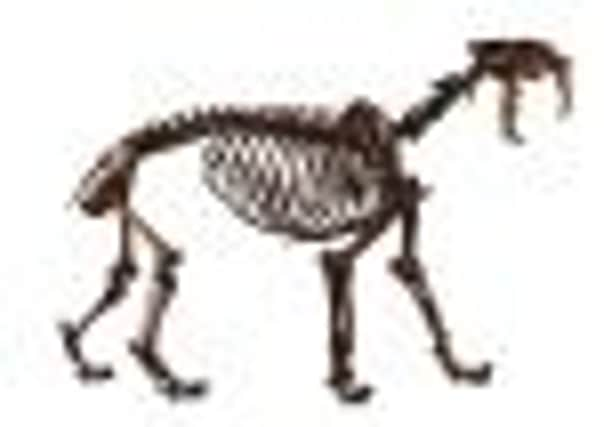Extinct predators’ teeth give scientists something to chew on


The evidence, from a study of the animals’ teeth, deepens the mystery surrounding the “megafaunal extinction” that wiped out legions of large beasts in North America.
Previously it was assumed that the changing climate at the end of the Pleistocene era, combined with human activity, killed off the animals.
Advertisement
Hide AdAdvertisement
Hide AdAs prey species such as mammoths and bison vanished, it would have been increasingly difficult for large carnivores to find enough food, according to the theory.
But the new findings suggest that two leading predators – the sabre-toothed cat and American lion – were not going hungry at all in the years leading up to their demise. If anything, the reverse was true. They appeared to have more meat than they needed.
Scientists used a highly accurate computerised technique to study 3D magnified images of tooth surfaces.
Fossil teeth of 15 American lions and 15 sabre-toothed cats that had been preserved in natural tar pits were examined. The specimens dated from 35,000 to 11,500 years ago – just before the megafaunal extinction.
Experts know that when food is scarce, carnivores try to avoid wasting it. They consume more of their kills and tend to crunch more bones, leaving telltale marks on their teeth.
Chomping red meat produces small parallel scratches on the tooth surface, while bones add larger, deeper pits.
The research found no sign of greater consumption of carcases as the big cats neared extinction. Instead, the analysis indicated that the proportion of their kills that the animals devoured declined.
Study leader Dr Larisa DeSantis, from Vanderbilt University in Nashville, USA, said: “While we cannot determine the exact cause of their demise, it is unlikely that the extinction of these cats was a result of gradually declining prey (due either to changing climates or human competition) because their teeth tell us that these cats were not desperately consuming entire carcases, as we had expected, and instead seemed to be living the good life.”
The findings are published in the online journal Public Library of Science ONE.